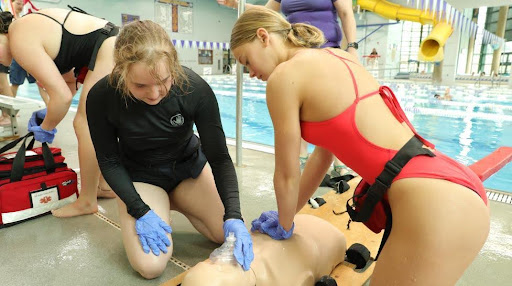A lifeguard is a trained professional responsible for ensuring the safety of individuals in aquatic environments such as pools, beaches, and water parks. They are trained to respond to emergencies, provide first aid, and prevent accidents from occurring.
Importance of lifeguards in ensuring water safety
Lifeguards play a crucial role in preventing drowning incidents and other water-related emergencies. Their vigilance and quick response can mean the difference between life and death in critical situations.
Understanding Lifeguard Course
Definition of a lifeguard course
A lifeguard course is a comprehensive training program designed to equip individuals with the necessary skills and knowledge to become certified lifeguards. It covers a wide range of topics including water rescue techniques, CPR, first aid, and emergency response protocols.
Objectives and components of the course
The primary objective of a lifeguard course is to prepare participants for the challenges they may encounter while on duty. It typically consists of both theoretical instruction and practical hands-on training to ensure proficiency in lifesaving skills.
Benefits of Taking a Lifeguard Course
Professional development opportunities
Completing a lifeguard course not only qualifies individuals for employment as lifeguards but also opens doors to various other career opportunities in the aquatics industry. Lifeguard certification is often a prerequisite for positions such as swim instructor or pool manager.
Increased employability in aquatic settings
Employers in aquatic facilities prioritize hiring certified lifeguards due to their specialized training and expertise in water safety. Holding a lifeguard certification enhances one’s resume and makes them more attractive candidates for lifeguarding positions.
Eligibility for Lifeguard Course
Prerequisites for enrolling in a lifeguard course
While specific requirements may vary depending on the program, most lifeguard courses have minimum age and swimming skill prerequisites. Participants are typically required to demonstrate proficiency in swimming and treading water.
Physical fitness requirements
Lifeguarding can be physically demanding, requiring individuals to possess strength, endurance, and agility. Prospective lifeguards should be in good physical condition and able to perform strenuous tasks such as swimming long distances and lifting heavy objects.
Finding a Lifeguard Course
Researching accredited programs
Before enrolling in a lifeguard course, it’s essential to research accredited programs recognized by reputable organizations such as the American Lifeguard Association (ALA). These programs adhere to industry standards and provide quality training.
Considering course duration and scheduling options
Lifeguard course near me are available in various formats, including intensive week-long programs and part-time evening classes. Prospective students should consider their availability and preferences when selecting a course that fits their schedule.
Registration Process
Steps to register for a lifeguard course
The registration process typically involves completing an application form, providing proof of age and swimming proficiency, and paying the course fee. Some programs may also require applicants to undergo a pre-course screening or interview.
Required documentation and fees
In addition to the registration form, participants may need to submit documentation such as a valid ID, CPR certification, and medical clearance. Course fees vary depending on the program and may include the cost of textbooks and certification exams.
Curriculum Overview
Basic lifesaving techniques
Participants learn essential lifesaving skills such as recognizing drowning signs, performing rescues, and providing initial care for victims.
CPR and first aid training
Lifeguard courses include comprehensive training in cardiopulmonary resuscitation (CPR) and first aid techniques for treating injuries and medical emergencies.
Water rescue skills
Students are taught various water rescue techniques using equipment such as rescue tubes, buoys, and backboards. They learn how to approach and assist distressed swimmers safely.
Training Methods
Classroom instruction
Theoretical concepts are taught through lectures, presentations, and interactive discussions in a classroom setting.
Hands-on practice in simulated rescue scenarios
Students participate in practical exercises and role-playing scenarios to simulate real-life rescue situations and apply their skills in a controlled environment.
Practical assessments
To demonstrate competency, participants must successfully complete written exams and practical assessments, including timed swimming tests and rescue simulations.
Certification Process
Criteria for obtaining lifeguard certification
To become certified, participants must meet all course requirements, including passing written exams, demonstrating proficiency in lifesaving skills, and meeting attendance criteria.
Written exams and practical assessments
Certification exams typically assess knowledge of lifeguarding principles, CPR techniques, and emergency protocols. Practical assessments evaluate participants’ ability to perform rescue maneuvers and provide first aid effectively.
Maintaining Certification
Renewal requirements
Lifeguard certifications are typically valid for a set period, often one to two years, after which they must be renewed. Renewal requirements may include completing refresher courses, demonstrating continued proficiency, and staying up-to-date with industry standards.
Continuing education opportunities for lifeguards
To stay current in their field, lifeguards can pursue continuing education opportunities such as advanced training courses, specialty certifications, and professional development workshops





